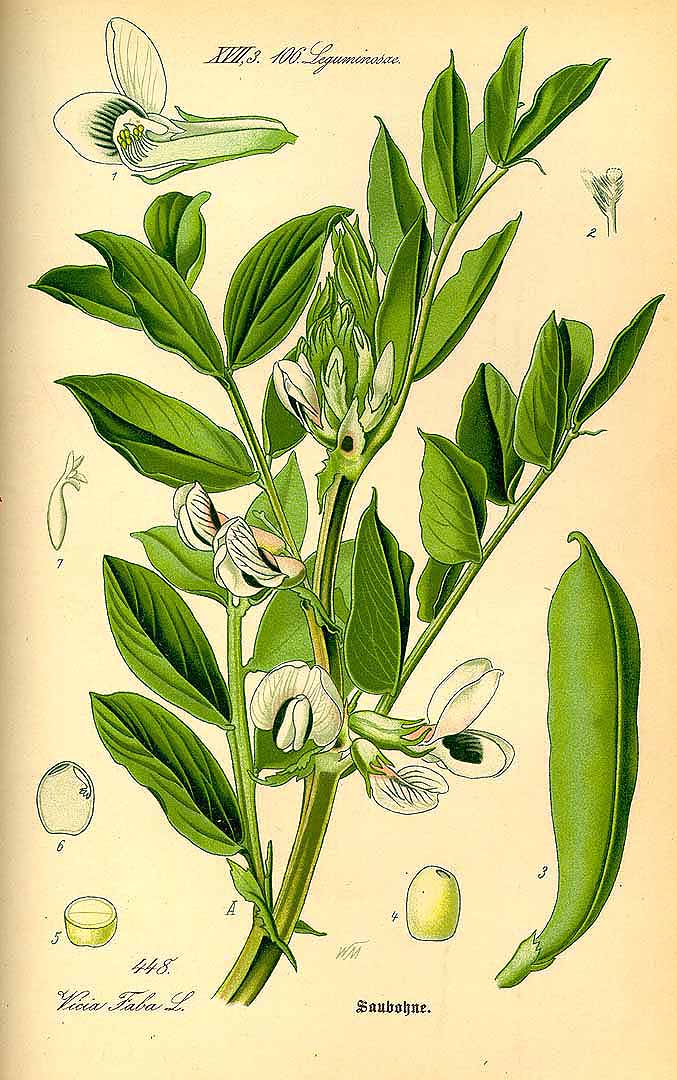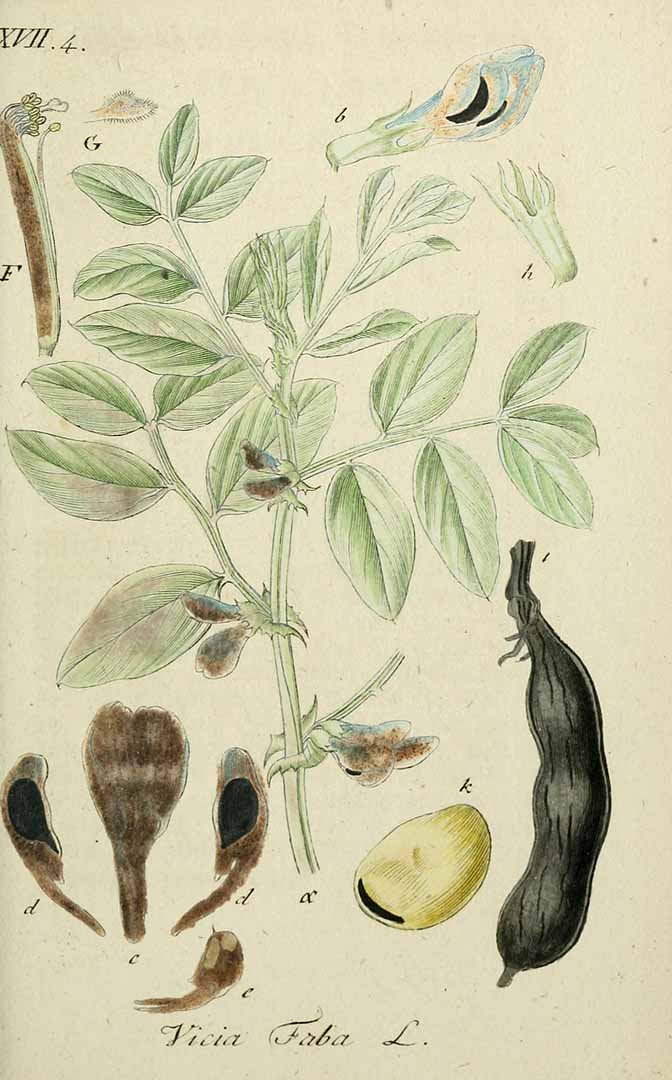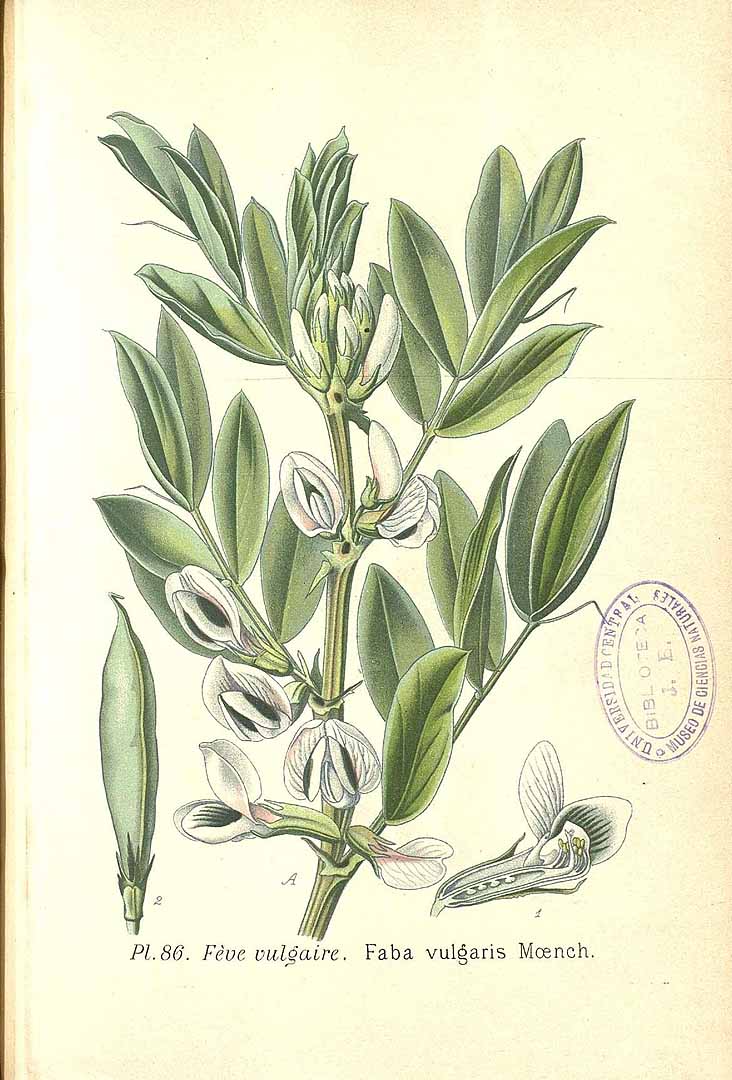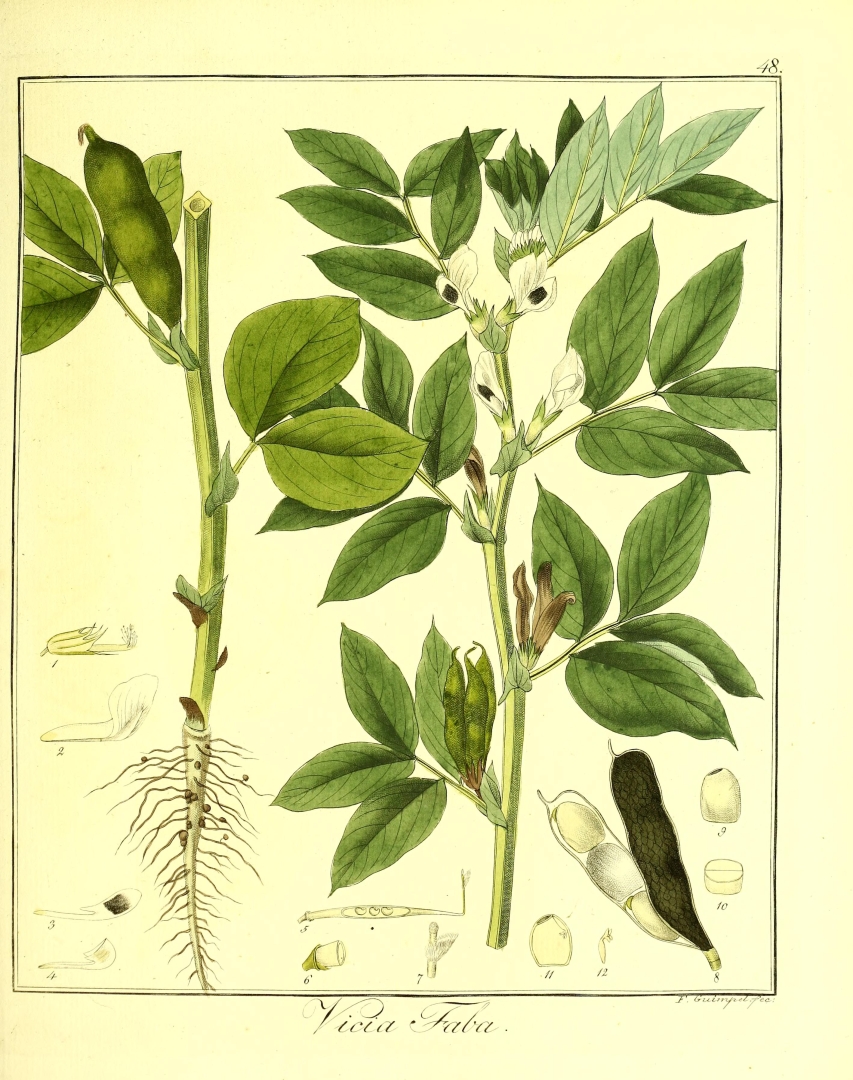! Nouveau site ici !
Vita > Plantae > Magnoliophyta > Magnoliopsida > Fabales >
Fabaceae > Vicia
Vicia faba
(Fève)
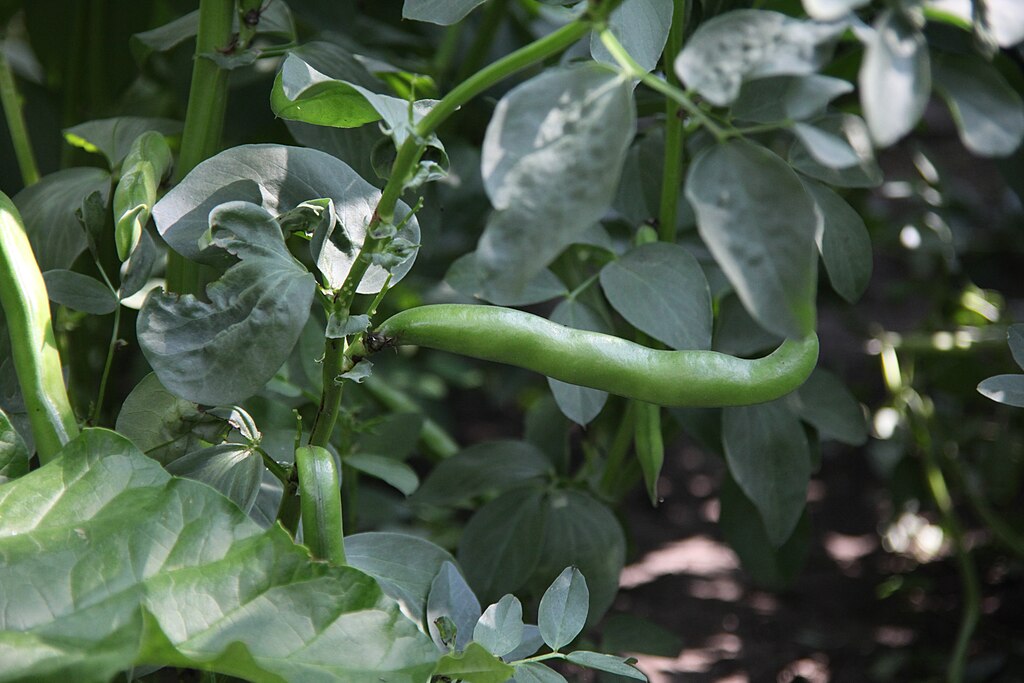

 | ****
| ****
Vita > Plantae > Magnoliophyta > Magnoliopsida > Fabales >
Fabaceae > Vicia
Vicia faba
(Fève)

-28/-29°C ( -5°C/-5/-7/-20°C selon d'autres sources)
-5°C/-5/-7/-20°C selon d'autres sources)
Plante herbacée annuelle, au port dressé, pouvant atteindre 1,6 mètre de haut (et s'enfoncer d'autant dans le sol), originaire d'Eurasie et du bassin méditerranéen, cultivée depuis plusieurs millénaires ...
→suite
Plante herbacée annuelle, au port dressé, pouvant atteindre 1,6 mètre de haut (et s'enfoncer d'autant dans le sol), originaire d'Eurasie et du bassin méditerranéen, cultivée depuis plusieurs millénaires ...
→suite
⬀
Le  donne accès au menu
donne accès au menu (c'est votre point de repère) 😊 ;
En dessous vous avez la classification, à partir de la vie (Vita, premier rang) jusqu'à la classe au dessus de la plante, dont vous trouvez ensuite le nom scientifique/botanique (latin) puis le nom commun (français), le cas échéant ;
C'est aussi un lien vers la fiche complète (tout comme la ✖, en bas à droite, et le +, en dessous de la description) ;
Vient alors l'illustration (ou ce qui la remplace, en attendant), la comestibilité :
Et en bas
⬂

